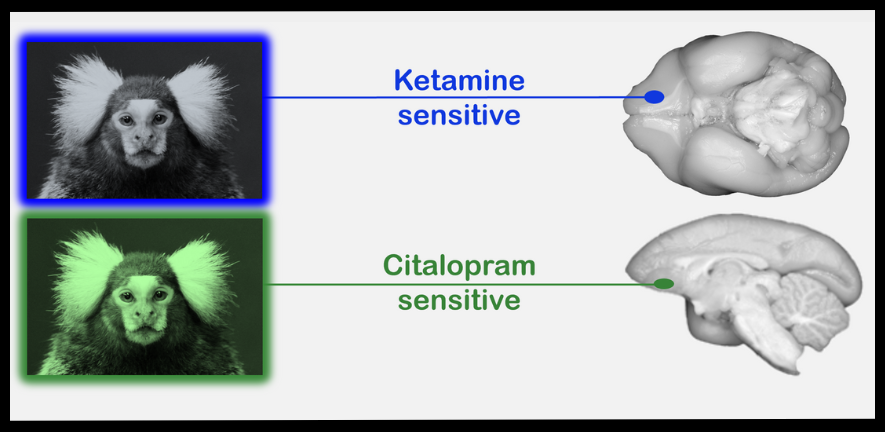
Submitted by Emily Rigby on Mon, 04/08/2025 - 12:27
A new study from the Roberts Lab, led by Dr Kevin Mulvihill, and published in Biological Psychiatry, reveals that not all anxiety is created equal—and neither is its treatment. Dr Mulvihill and Professor Roberts have discovered that different forms of heightened anxiety-like behaviour, driven by dysregulation in specific regions of the prefrontal cortex, respond uniquely to different anxiolytic medications. This finding paves the way for a more targeted, personalized approach to treating anxiety disorders.
Using the common marmoset monkey, a non-human primate with a brain structure closely resembling that of humans, the team utilised two distinct neural causes of anxiety-like behaviour: overactivation of the ventromedial prefrontal cortex (vmPFC) and inactivation of the orbitofrontal cortex (OFC). While both conditions produced similar heightening of anxiety-like behaviour in response to an uncertain threat, their responsiveness to treatment diverged sharply.
When anxiety was induced via vmPFC overactivation, the widely prescribed SSRI citalopram significantly reduced the heightened response. However, ketamine, a fast-acting alternative, currently under investigation for mood disorders, had little effect. In contrast, when anxiety arose from OFC dysfunction, ketamine—but not citalopram—proved effective, in particular when administered directly into the affected brain region.
“This is the first time we've shown that different ‘faces’ of anxiety with distinct brain signatures respond to different treatments,” said Dr. Mulvihill, lead author of the study. “It’s a critical step toward precision psychiatry, where treatment is matched to the brain’s underlying pathology.”
The findings challenge the one-size-fits-all approach to anxiety medication and highlight the need for brain-based diagnostics in clinical care. By revealing how specific prefrontal circuits drive individual differences in treatment response, this work could ultimately lead to more effective personalised treatment strategies.
Read the study via the ScienceDirect website: Heightened anxiety with distinct prefrontal substrates is differentially sensitive to the anxiolytics, citalopram and ketamine: Prefrontal substrates and anxiolytic sensitivity - ScienceDirect

